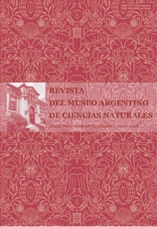¿Quién va a describir nuestra biodiversidad?: el impedimento taxonómico frente al Protocolo de Nagoya y las normativas vigentes
Resumen
Palabras clave
Texto completo:
PDFReferencias
Acosta, L. E. 1989. Pachyloides hades, nueva especie de opilión de la Argentina (Opiliones, Gonyleptidae, Pachylinae). The Journal of Arachnology 17: 137-142.
Bouchet, P. 1997. Inventorying the molluscan diversity of the world: what is our rate of progress? The Veliger 41(1): 1-11.
Bouchet, P., Bary, S., Héros, V. & Marani, G. 2016. How many species of molluscs are there in the world’s oceans, and who is going to describe them? In: Héros V., Strong E. & Bouchet P. (eds), Tropical Deep-Sea
Benthos, 29: 9-24 (Mémoires du Muséum national d’Histoire naturelle; 208).
Convention on Biological Diversity / Convenio sobre la Diversidad Biológica. https://www.cbd.int/
CBD Technical Series N° 30: Guide to the Global Taxonomy Initiative. pp. i-viii, 1-195. https://www.cbd.int/doc/publications/cbd-ts-30.pdf
Fontaine, B., Perrard, A. & Bouchet, P. 2012. 21 years of shelf life between discovery and description of new species. Current Biology 22(22): R943-944.
Huber, B.A. 2014. Progress and prospects in taxonomy: what is our goal and are we ever going to reach it? The Journal of Arachnology 42: 142–147.
Martens, J. 2016. Das Protokoll von Nagoya und die Folgen für die Biodiversitätsforschung – ein Kommentar. Studia dipterologica, Supplement 21: 8–11.
May, R.M. 2004. Tomorrow’s taxonomy: collecting new species in the field will remain the rate-limiting step. Philosophical Transactions of the Royal Society of London, B 359: 733–734. doi: 10.1098/rstb.2003.1455
Meyer, T. & Weyrauch, W. K. 1966 . Guia para dos excursiones biológicas en la provincia de Tucumán. Miscelánea. Instituto Miguel Lillo, Tucuman, N° 23, pp . 1-127.
Ministerio de Ambiente y Desarrollo Sustentable. Estrategia Nacional sobre la Biodiversidad. Plan de Acción 2016-2020. https://www.argentina.gob.ar/ambiente/biodiversidad/estrategianacional
Mora, C., Tittensor, D.P., Adl, S., Simpson, A.G.B. & Worm, B. 2011. How many species are there on Earth and in the ocean? PLoS Biol 9(8): e1001127. doi: 10.1371/journal.pbio.1001127
Neumann, D., Borisenko, A.V., Coddington, J.A., Häuser, C.L., Butler, C.R., Casino, A., Vogel, J.C., Haszprunar, G. & Giere, P. 2018. Global biodiversity research tied up by juridical interpretations of access and benefit sharing. Organisms Diversity and Evolution 18: 1–12. doi: 10.1007/s13127-017-0347-1
Prathapan, K.D., Pethiyagoda, R., Bawa, K.S., Raven, P.H., Rajan, P.D. and 172 co-signatories from 35 countries. 2018. When the cure kills--CBD limits biodiversity research. Science 360 (6396), 1405-1406. doi: 10.1126/science.aat9844
Silvestri, L.C. 2017. Protocolo de Nagoya: desafíos originados a partir de un texto complejo, ambiguo y controversial. Anuario Mexicano de Derecho Internacional 17: 697-716.
Watanabe, M.E. 2017. The Nagoya Protocol: big steps, new problems. BioScience 67 (4): 400. doi: 10.1093/biosci/bix019
Willink, A. 1999. Biografías zoológicas lilloanas. Revista de la Sociedad Entomológica Argentina 58 (3-4): 3-10.
Enlaces refback
- No hay ningún enlace refback.

This work is licensed under a Creative Commons Attribution 3.0 License.

